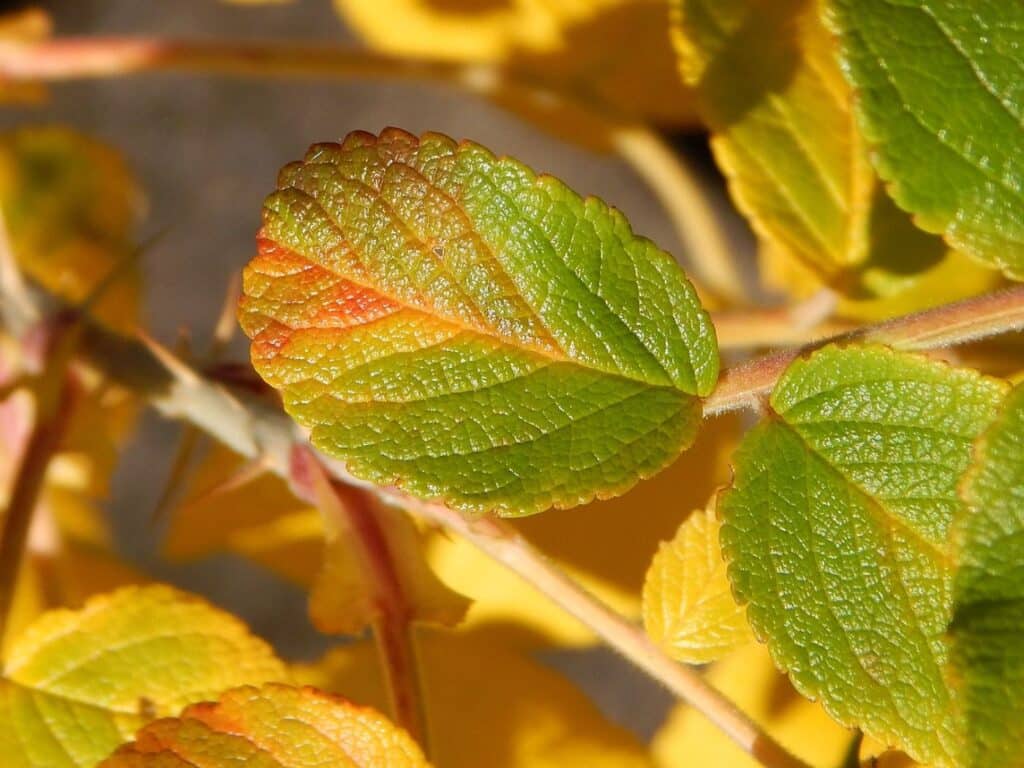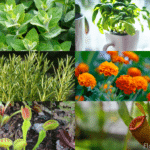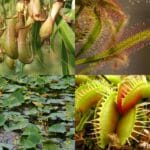Imagine stepping into your garden, expecting to be greeted by the lush greenery of new growth, but instead, you find the young leaves turning yellow. It’s disheartening, isn’t it?
This common issue can leave even the most seasoned gardeners scratching their heads, wondering where things went wrong. But don’t worry, you’re not alone in this. Yellowing leaves, especially in new growth, can be a sign of several underlying issues, from nutrient deficiencies to improper watering habits.
Understanding the root cause is essential to turning things around for your plants. This article is designed to guide you through the possible reasons behind this disheartening phenomenon and offer practical solutions to restore your garden’s vitality.
So, let’s dive in and unravel the mystery together, ensuring your plants get back to their vibrant selves in no time.
Understanding New Growth Leaves Turning Yellow

The Normal Growth Process of Plants
Plants undergo a lifecycle that starts from a seed and progresses through stages of growth until maturity. This journey includes the unfurling of new leaves, which are initially lighter in color.
As these leaves age, they gain the characteristic green hue due to chlorophyll, the pigment responsible for photosynthesis. It’s this process that converts light into energy, fueling further growth.
When Yellowing Is A Cause for Concern
However, when you notice new leaves turning yellow, it’s time to pay attention. This change signals potential distress, diverging from the typical growth pattern. Several factors can trigger this issue, such as nutrient deficiencies, particularly a lack of nitrogen, which is crucial for leaf development.
Over or under-watering also plays a significant role. Roots need the perfect balance of water to transport nutrients effectively. Too much water leads to root rot, whereas too little hampers nutrient uptake.
Additionally, environmental stressors, including extreme temperatures, insufficient light, or pests, can contribute to the problem. Identifying the correct cause is essential for rectifying the situation and restoring your plant’s health. Address these concerns promptly, as prolonged stress can lead to severe growth issues or even plant loss.
Common Causes of Yellowing Leaves in New Growth
Yellowing leaves on new growth can stump even the greenest thumbs. It’s time to put on your detective hat and dive into the reasons your plants may well be signaling a cry for help.
Nutrient Deficiencies and Imbalances
Think of plants as having a diet; if they miss out on essential nutrients, problems arise. Yellow leaves often point to a scarcity of nitrogen, crucial for foliage growth.
But it’s not just a nitrogen game; a lack of iron, magnesium, or potassium can also lead to yellowing. Giving your plants a balanced meal with the right fertilizer mix can turn things around.
Overwatering or Underwatering Issues
Too much love in the form of water can be just as problematic as not enough. Root rot from overwatering deprives plants of oxygen, leading to yellow leaves, while underwatering causes drought stress, making it hard for them to maintain lush, green foliage.
Strike a balance to keep your plants hydrated just right, and watch as they show their gratitude through vibrant growth.
Lighting Problems and Stress
Light – plants can’t live with too much of it, and they can’t grow without enough. If your new growth is yellowing, it may well be crying out for more sunlight or suffering from a sunburn.
Finding that sweet spot where your plants get enough light without overdoing it can be a bit of a Goldilocks scenario, but when you get it just right, your plants will thrive.
Pests and Disease
Bugs and germs love your plants as much as you do, but their affection comes with consequences. Pests like spider mites, aphids, and whiteflies suck the life out of new growth, turning leaves yellow.
Diseases such as root rot and fungal infections also manifest through yellowing leaves. A keen eye for early signs of infestation or sickness, followed by prompt action, can save your garden from a yellow-leaf epidemic.
Investigating the Problem
How to Assess Your Plant’s Health
Assessing your plant’s health begins with a close examination of its leaves, stems, and soil. Yellow leaves, especially in new growth, signal it’s time for a closer look. Start by checking the moisture level of the soil; too dry or too wet can both be culprits.
Next, inspect the plant for any signs of pests or diseases, such as unusual spots or webbing. Assessing these factors can guide you toward identifying the root cause of the yellowing leaves.
Signs of Specific Nutrient Deficiencies
Nutrient deficiencies manifest in unique ways, making it possible to pinpoint the missing element. Nitrogen deficiency often leads to older leaves turning yellow first, while iron deficiency targets new growth, making the veins remain green as the leaf yellows.
A lack of magnesium will show as yellowing between the leaf veins, usually on lower leaves. Recognizing these patterns helps in addressing the specific deficiency affecting your plant.
The Role of Soil Testing
Soil testing plays a critical role in solving the yellowing leaves mystery. By revealing the pH level and nutrient content of your soil, a test can direct you to the necessary amendments.
If the soil is too acidic or alkaline, nutrient absorption is hindered, potentially leading to yellow leaves. A soil test provides a clear path to adjusting your soil conditions to support healthy plant growth.
Remedies and Prevention Strategies
Tackling the issue of new growth leaves turning yellow requires a mix of understanding and action. Here’s how you can address this problem with effective remedies and prevent it from recurring.
Proper Watering Techniques
Over-watering or under-watering can lead to yellow leaves, a sign your plants are not happy. Check the soil before watering; it should be moist, not soggy or bone dry.
A good rule of thumb is to water deeply but infrequently, allowing the soil to dry slightly between watering sessions. This approach encourages deep root growth, which supports healthier plants.
Adjusting Your Fertilization Routine
Nutrient imbalances often manifest as yellow leaves. If a soil test reveals deficiencies, consider adjusting your fertilization routine. However, more fertilizer isn’t always the answer, as too much can harm plants.
Opt for a balanced, slow-release fertilizer that provides a steady stream of nutrients. Applying it in the early growing season supports the development of new growth without overwhelming your plants.
Managing Light Exposure
Too much or too little light can stress plants, leading to yellow leaves. If your plants are indoors, move them to a spot that receives indirect, bright light for most of the day. Outdoor plants may need partial shade, especially during the hottest parts of the day. Gradually acclimate plants to new lighting conditions to avoid shock.
Pest and Disease Control Methods
Pests and diseases can sneak up on unsuspecting gardeners, turning new growth yellow. Regularly inspect your plants for signs of trouble, such as sticky residues or discolored spots.
Introduce beneficial insects, like ladybugs, to control aphid populations naturally. For diseases, remove affected leaves and apply fungicides or bactericides as needed, always following the product directions. A proactive stance is your best defense against these stealthy invaders.
Adopting these strategies can significantly reduce the chances of new growth turning yellow, ensuring your plants stay vibrant and healthy. Remember, a little observation and some adjustments to your gardening routine can make all the difference.
Tailoring Care for Different Plant Species
Recognizing Species-Specific Needs
Every plant has its own set of requirements that are as distinct as fingerprints. When your new growth leaves start waving the yellow flag, it’s a sign to dig deeper into what your green friends truly need. Take aloe and lavender, for example.
They thrive on neglect, basking in direct sunlight and preferring their soil on the dry side. On the flip side, ferns and calathea play a different game, demanding constant moisture and filtered light to showcase their lush, green leaves. Recognizing these needs isn’t just about keeping your plants alive; it’s about letting them show off their best selves.
Environmental Conditions for Optimal Health
Creating the perfect environment for your plants is like being a backstage manager at a concert; everything needs to be just right for the show to go on. Lighting, humidity, and temperature steer the ship of plant health.
Succulents begging for that sunny windowsill may well throw a tantrum if left in the shade, while tropical plants like monstera demand high humidity, or they’ll start to crisp up at the edges.
Temperatures too can make or break your plant’s vibe, with most preferring a cozy range between 65 – 75°F during the day. Adjusting these elements according to each plant’s preferences helps in banishing the yellows, ensuring your plants remain vibrant performers in your garden ensemble.
Frequently Asked Questions
Why do plant leaves turn yellow?
Yellowing leaves can occur due to several reasons, including nutrient deficiencies, improper watering, inadequate lighting, and pest infestations. Identifying the specific cause is crucial for correcting the issue.
What are the signs of magnesium deficiency in plants?
Signs of magnesium deficiency include yellowing between leaf veins, especially on lower leaves, and in severe cases, leaf edges may curl and become dry. A soil test can confirm this deficiency.
How can improper watering affect plant health?
Both under-watering and over-watering can harm plants, leading to yellow leaves. Under-watered plants receive insufficient hydration, causing leaves to droop and yellow. Over-watered plants can suffer from root rot, which impedes nutrient uptake, also resulting in yellow leaves.
What adjustments should be made for plants with special care requirements like aloe or lavender?
Aloe requires bright, indirect light and well-draining soil, allowing soil to dry between waterings. Lavender thrives in full sun, with light, sandy soil. It prefers drier conditions, so over-watering should be avoided.
Can soil testing help in preventing yellow leaves?
Yes, soil testing can identify deficiencies in essential nutrients and pH imbalances. This allows gardeners to adjust fertilization routines and soil conditions specifically to the needs of their plants, preventing nutrient-related yellowing.
What role does light play in preventing yellow leaves?
Proper lighting is key. Too much direct sunlight can scorch leaves, leading to yellowing, while insufficient light can weaken plants, also causing yellow leaves. Adjusting plant placement according to their light needs is crucial for their health.
How can pests and diseases contribute to yellowing leaves?
Pests like aphids and diseases such as fungal infections can damage plant tissue, interrupting their ability to photosynthesize effectively. This results in yellowing leaves. Regularly inspecting plants for pests and diseases can prevent significant damage.
See more:







